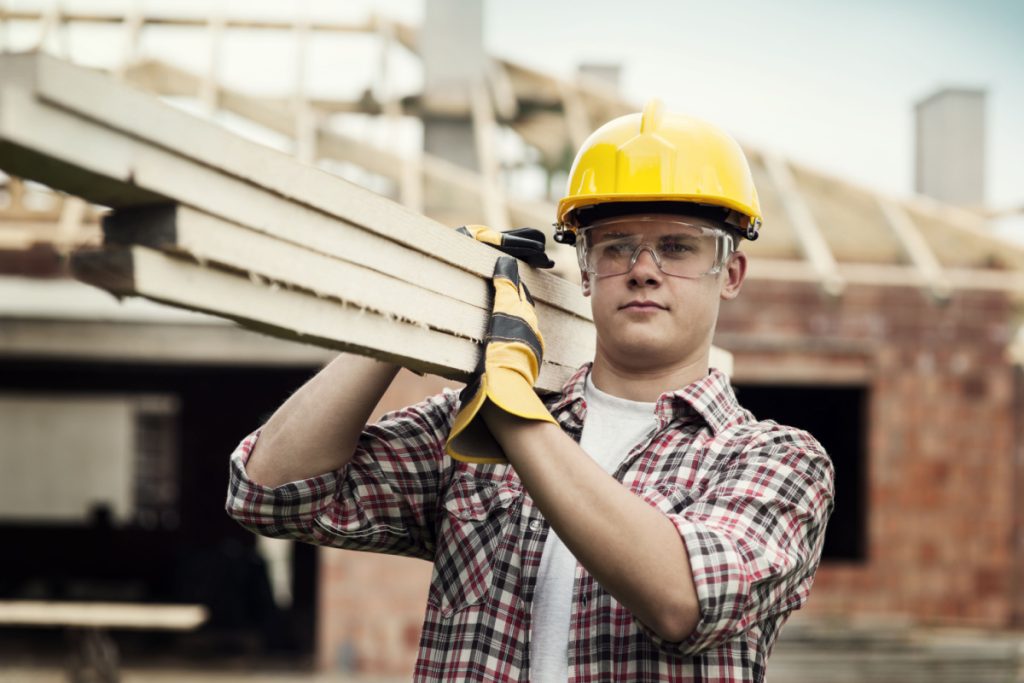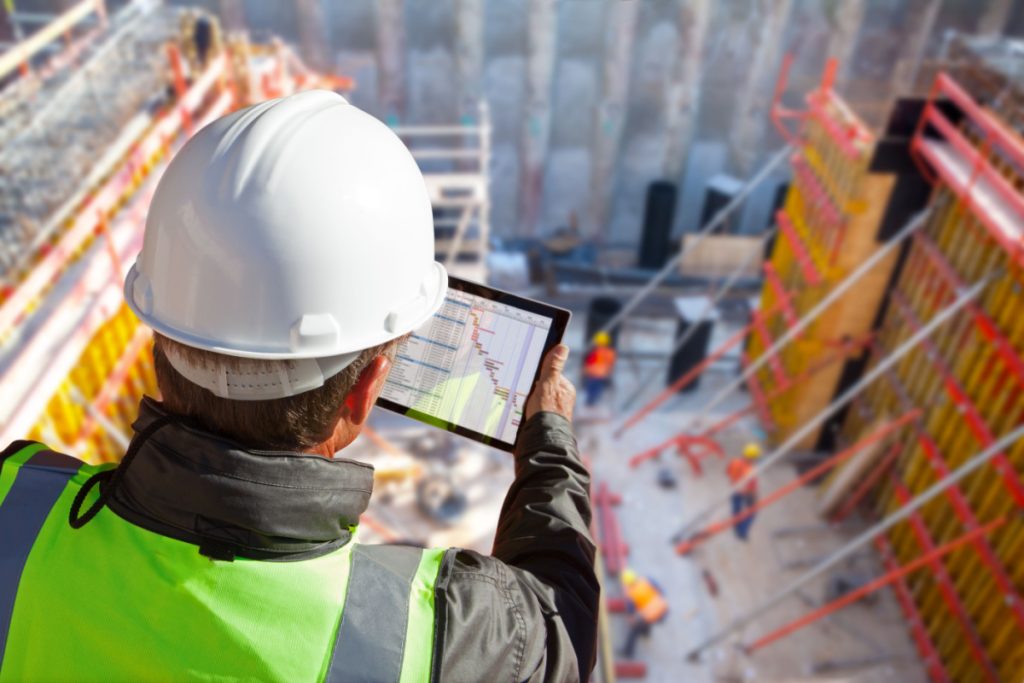In construction, prioritizing safety emerges as a fundamental commitment, a collective pledge to safeguard every individual amidst the bustling activity of worksites. This article delves into the critical intersection between construction site safety and the transformative influence of technology, exploring the dynamic ways cutting-edge innovations play an instrumental role in averting potential tragedies.

Current State of Construction Site Safety
While construction safety standards have improved in recent years, there remains a high level of risk when entering a construction zone. Accidents on construction sites can result in severe injury and wrongful death. According to recent statistics, construction accidents remain a considerable concern, with many incidents resulting in severe injuries or fatalities. These statistics underscore the urgency of addressing safety challenges within the industry.
Common causes leading to accidents on construction sites often revolve around factors such as inadequate training, insufficient safety protocols, and the unpredictable nature of construction work. Falls from heights, electrocutions, and incidents involving heavy machinery are among the prevalent accident types. Understanding these common causes is pivotal in formulating effective strategies to mitigate risks and enhance safety.
The importance of proactive measures to elevate safety standards in construction cannot be overstated. Implementing rigorous safety training programs, enforcing stringent safety protocols, and embracing technological innovations emerge as key components of a proactive approach. By adopting preventive measures, construction sites can significantly reduce accidents and foster an environment where workers can carry out their tasks with a reduced risk of harm.
Current Regulations in Place Protecting Construction Workers
The construction industry functions due to regulations designed to safeguard the well-being of its workforce. These regulations, established at federal, state, and local levels, outline standards and guidelines to ensure that construction sites prioritize safety. One crucial set of regulations is the Occupational Safety and Health Administration (OSHA) standards, which lay down comprehensive safety measures for the construction sector.
These regulations cover various safety aspects, from fall protection and hazard communication to respiratory protection and electrical safety. For instance, the OSHA Construction Industry Standard 29 CFR 1926 mandates using personal protective equipment (PPE), outlines safety training requirements and establishes protocols for handling hazardous materials.
In addition to federal regulations, many states and local jurisdictions have their own specific safety guidelines tailored to the unique characteristics of their construction environments. Adherence to these regulations is both a legal requirement and a vital commitment to the welfare of construction workers. By understanding and implementing these regulations, construction sites can foster a safety culture and significantly reduce the risk of accidents, thereby protecting the lives of those contributing to the construction industry.
Technology’s Impact on Construction Site Safety
Recent technological advancements have introduced innovative solutions to enhance productivity and, crucially, elevate the safety of construction sites. From state-of-the-art construction management software to cutting-edge equipment teeming with sensors, the industry is experiencing a transformative wave.
This surge includes new technologies explicitly designed to improve construction site safety, ensuring that the well-being of workers takes center stage in the era of modern construction. As we explore these innovations, it becomes evident that technology is not merely a tool but a dedicated guardian, ushering in a safer and more secure environment for those who contribute to building our cities.
What Technology is Being Used to Make Construction Sites Safer?
Many devices and software have been developed with construction site safety as their sole purpose. Here are a few of the most common examples of modern tech being implemented to improve safety standards at construction sites:
Drones for Aerial Surveillance
Drones are increasingly utilized for aerial surveying and monitoring construction sites. They provide a comprehensive view of the area, enabling quick identification of potential hazards, assessing progress, and enhancing overall site management.
Sensors for Environmental Monitoring
Advanced sensors detect environmental changes in real-time. These sensors contribute to the safety of workers by identifying fluctuations in temperature, humidity, and air quality, ensuring a proactive response to potential risks.
Wearable Technology for Real-time Monitoring
Wearable technology, such as smart helmets, vests, and glasses, equipped with sensors, monitors vital signs, detects fatigue levels, and provides real-time data on environmental conditions. This ensures immediate alerts and enhances the overall safety of construction workers.
Construction Management Software
State-of-the-art software solutions streamline construction project management. These tools facilitate better communication, coordination, and documentation, contributing to a safer and more organized construction process.
Exoskeletons for Enhanced Physical Support
Exoskeletons are designed to provide physical support to construction workers, reducing the risk of musculoskeletal injuries. These wearable devices enhance strength and endurance, contributing to overall worker safety.
How Can Data Analytics Improve Construction Site Safety?
Data analytics enables a proactive approach, allowing construction managers to identify areas of concern before they escalate into safety hazards. Analyzing historical data empowers decision-makers to implement targeted preventive measures, ultimately fostering a safer construction environment. Through the lens of data analytics, the construction industry can move beyond reactive responses and strategically shape safety protocols, ensuring the well-being of workers remains at the forefront of every project.
Challenges and Concerns With Implementing Safety Tech
As the construction industry eagerly embraces innovative safety technologies, it also confronts various challenges and concerns inherent in their adoption. Implementing safety tech may encounter resistance due to the need for extensive training and adjustments to established workflows.
Additionally, concerns related to privacy, particularly regarding data collection from wearable technology and surveillance tools, demand careful consideration. Cybersecurity has become paramount, requiring measures to safeguard sensitive information from potential threats. Equally crucial is addressing worker acceptance, ensuring the workforce is receptive to and comfortable integrating new technologies.
Navigating these challenges is integral to successfully implementing safety tech, requiring a balanced approach that prioritizes both technological advancement and the workforce’s well-being.

What to Do When Injured on a Construction Site
Prompt and informed actions are paramount in the unfortunate event of sustaining an injury on a construction site. Immediately following an injury, it is crucial to prioritize personal safety and seek immediate medical attention. Simultaneously, injured individuals should report the incident to their supervisors, ensuring that the appropriate documentation process is initiated. This documentation becomes a cornerstone in safeguarding workers’ rights, as a thorough incident record aids in the subsequent processes.
In the immediate aftermath of an injury, be sure to take the following steps:
- Prioritize personal safety
- Seek immediate medical attention
- Report the incident to the supervisors
- Document the scene
- Collect witness information
- Seek medical evaluation
Workers injured on construction sites possess specific rights that must be understood and asserted. Employers must provide access to medical treatment, and injured workers have the right to choose their healthcare provider in certain jurisdictions. Documenting the incident comprehensively serves as a crucial step in securing these rights.
Additionally, injured workers should be aware of the workers’ compensation system, as filing a claim after a personal injury can provide financial and medical benefits. Understanding the nuances of this process is essential, as it ensures that individuals receive the support and compensation they are entitled to during their recovery.
Seeking Legal Representation in a Wrongful Death Suit
In the devastating event of a wrongful death on a construction site, seeking legal representation becomes an essential step for the affected family. Wrongful death cases in the construction industry often involve complex legal nuances, necessitating the expertise of legal professionals specializing in workplace accidents. Families facing such tragedies have legal recourse to pursue compensation for their loss.
Legal representation is crucial for guiding the affected family through the intricate legal process. This typically involves a comprehensive investigation into the incident’s circumstances, collecting relevant evidence, and filing a wrongful death lawsuit. Legal professionals play a pivotal role in ensuring that all aspects of the case are thoroughly examined and presented.
Navigating the legal complexities of a wrongful death suit requires a deep understanding of workplace safety regulations, liability considerations, and potential compensation avenues. Legal representation not only serves to advocate for the affected family but also aids in securing the evidence necessary to build a strong case. Through this process, legal professionals work towards obtaining fair compensation for the family, encompassing medical expenses, funeral costs, and loss of financial support.
In the face of such tragic circumstances, seeking legal representation offers a lifeline for affected families, providing them with the necessary support to navigate the legal intricacies and pursue justice for their loved ones.
Technology stands as an answer to the many safety issues plaguing construction sites. The innovative tools, from aerial surveillance by drones to the real-time monitoring capabilities of wearable technology, underscore the industry’s commitment to advancing safety measures and helping prevent personal injury in California construction sites.
However, this journey is ongoing, and the call for continued innovation and the widespread adoption of safety tech reverberates through the construction landscape. As we embrace the positive impacts of technology, it is crucial to recognize the collective responsibility we share in preventing wrongful deaths on construction sites. By blending technological advancement, robust safety regulations, and a commitment to the workforce’s well-being, we can pave the way for a safer and more secure future in the dynamic construction world.
FAQs About the Role of Technology in Construction
Can technology eliminate accidents on construction sites?
While technology significantly reduces risks, eliminating accidents is challenging. It is a powerful tool to enhance safety, but proactive human intervention remains crucial.
What role does training play in improving construction site safety?
Training is fundamental. Even with advanced tech, well-trained workers contribute to a safer environment by adhering to protocols, recognizing hazards, and responding appropriately.
Are there specific laws addressing construction site safety at the federal level?
Yes, OSHA (Occupational Safety and Health Administration) establishes federal safety regulations for construction sites, covering many aspects to protect workers.
Can construction workers refuse to use wearable technology due to privacy concerns?
Workers may voice concerns, but employers must balance privacy with safety. Clear communication about data use and implementing safeguards can address these concerns.
How long does the legal process take in a wrongful death suit for a construction site accident?
The duration varies based on factors like complexity and jurisdiction. Legal proceedings can span months to years, depending on multiple variables.
What types of compensation are typically sought in wrongful death suits?
Compensation may cover medical expenses, funeral costs, lost financial support, and potentially punitive damages based on the circumstances of the case.
Is workers’ compensation the only avenue for injured workers, or can they file lawsuits?
Workers’ compensation is the primary avenue, but in certain situations, injured workers may pursue lawsuits against third parties, such as equipment manufacturers or contractors.
Can family members of a deceased construction worker file a lawsuit for emotional distress?
Depending on the jurisdiction, family members may be able to pursue a separate claim for emotional distress in addition to a wrongful death lawsuit.
How can technology assist in training construction workers for safety?
Virtual reality (VR) and augmented reality (AR) technologies are increasingly used for immersive safety training, providing realistic scenarios for workers to navigate.
What steps can construction companies take to create a culture of safety?
Companies can prioritize safety through consistent training, promoting open communication about hazards, rewarding safe practices, and actively involving workers in safety decision-making processes.
***Disclaimer: This webpage has been crafted by Heidari Law Group solely for educational purposes. The content of this article aims to offer a broad comprehension of the law and does not constitute specific legal advice. By accessing this site and perusing its contents, no attorney-client relationship is established between you and any member of Heidari Law. Additionally, it’s important to note that the legal landscape is subject to continuous change, rendering some of the information provided herein potentially outdated or no longer applicable.



